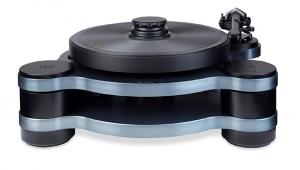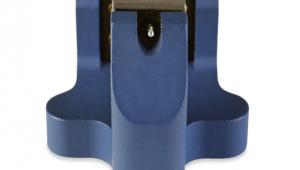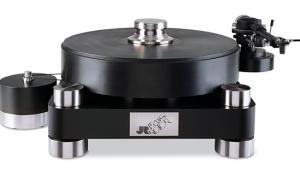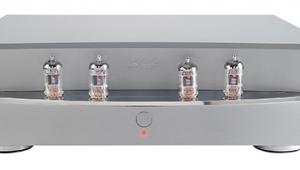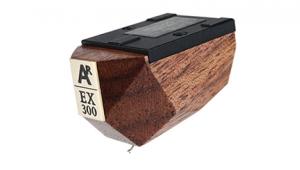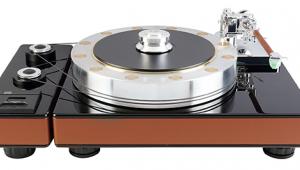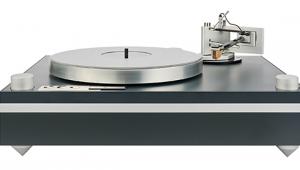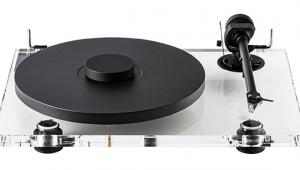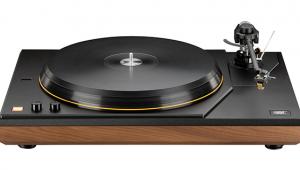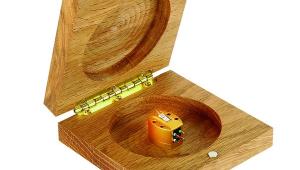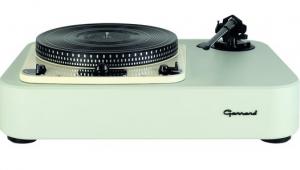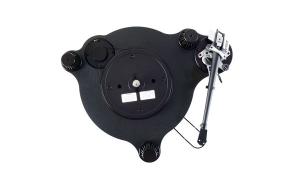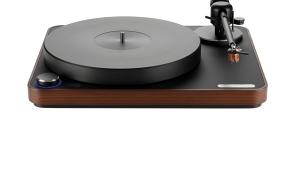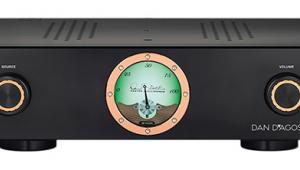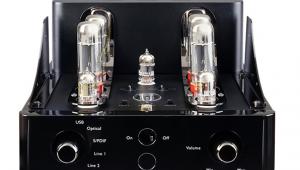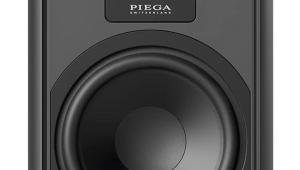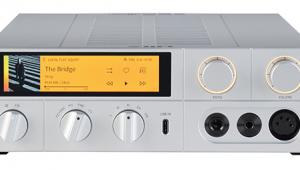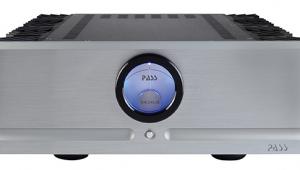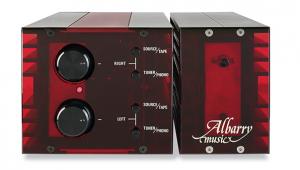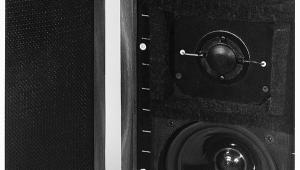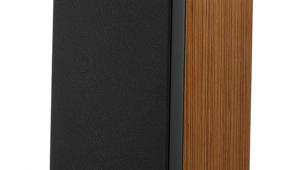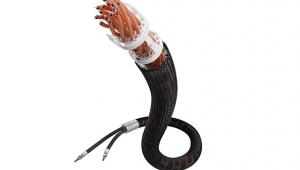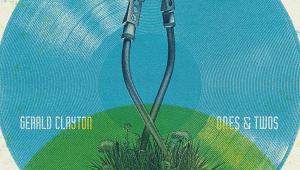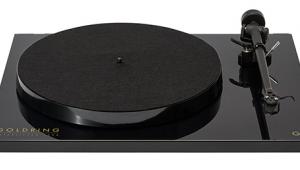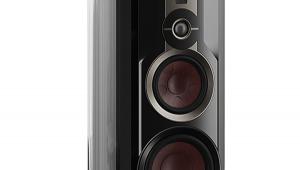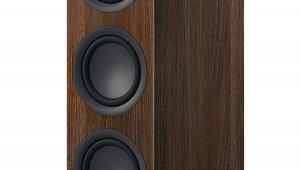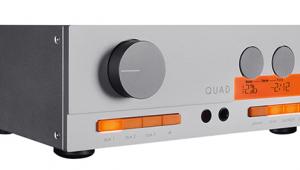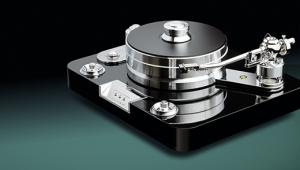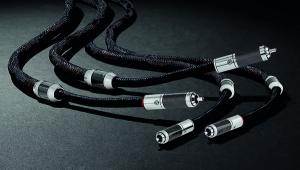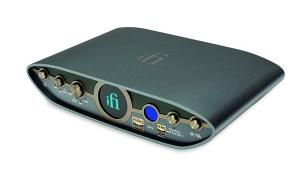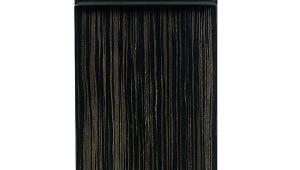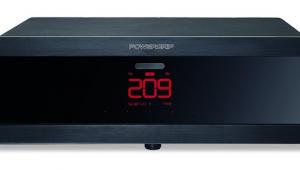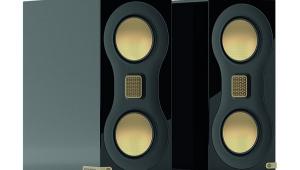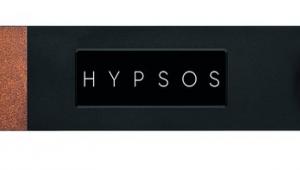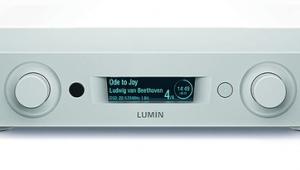Technics SL-1200GR2
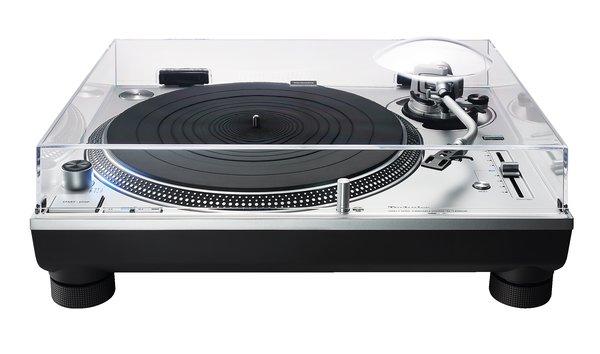
 From SL-1200GR to 'GR2, Technics' adherence to the theory of 'marginal gains' ensures its most popular direct-drive deck remains at least one step ahead of the competition
From SL-1200GR to 'GR2, Technics' adherence to the theory of 'marginal gains' ensures its most popular direct-drive deck remains at least one step ahead of the competition
Following the debut of its first direct-drive models over 50 years ago, many versions of Technics' iconic SL-1200 model have appeared, all able to trace their technical and industrial design back to the original. Neither have enthusiasts been short of choice - when the legendary spinner returned in 2016, after a six-year hiatus, the brand introduced four SL-1200 tiers. The 'GR' or 'Grand Class' occupied a middle position, with the apex SL-1200R version and heavier 'G/GAE' models catering to hardcore audiophiles, and the more affordable 'MK7/ M7' units aimed at budding DJs.
The midrange £1799 SL-1200GR2 reviewed here (or the SL-1210GR2 in black finish) is presented as the first of a new generation featuring an updated motor control solution. It also adopts some features from the more expensive R and G versions, including a built-in power supply with integral noise suppression.
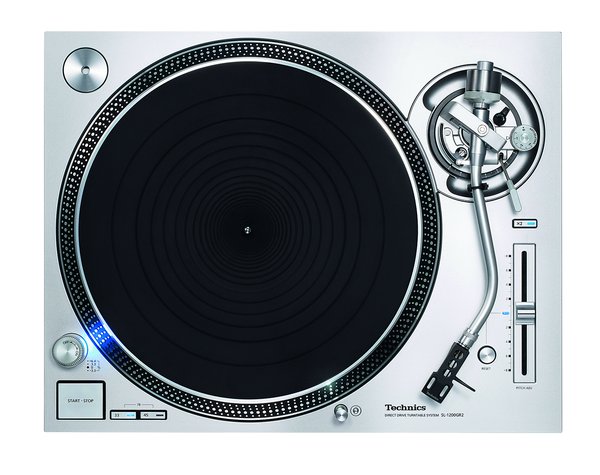
Cast alloy platter is reinforced by a
series of radial ribs and damped by a rubber
mat atop. The coreless direct-drive motor was
debuted in the original SL-1200G model but is
driven by new digital PWM amplifier here
Pick A Pick-Up
Regardless of what the press release states, a lot remains unchanged from the previous SL-1200GR. Mirroring a phenomenon seen in laptops and smartphones, where innovation is becoming more and more about fewer changes, the SL-1200GR2 suggests it's becoming harder for Technics to make profound leaps forward in terms of its hardware design. Does that make this deck a rational incremental update to a triedand-trusted concept, rather than a further step up the audiophile ladder? We'll see...
As is Technics’ wont, the SL-1200GR2 is offered as a nearly complete package. Tonearm, rubber mat and dust cover are included, along with all necessary cabling. The only thing you need to add is a cartridge of your choice (an Ortofon 2M Red is bundled with the step-down SL-1500). Technics provides a headshell, meaning you (or your dealer) just need to attach your cartridge and lock it onto the SME connector at the end of the deck's unchanged S-shaped aluminium tonearm.
No Hassle
If you are more DIY-inclined or like to regularly swap pick-ups around, then you'll appreciate the supplied alignment tool and adjustable arm base that facilitates tweaks to arm height, and stylus VTA, on the fly. There are also assorted bits and bobs for mounting an off-size cartridge. So, while setting up the SL-1200GR is a slightly more involved process than with a full-service package from, say, Pro-Ject, it's not particularly irksome - and, being direct-drive, there's none of the hassle of threading a belt over a pulley!
The SL-1200GR2 has very few surprises in store when it comes to its design. It looks like a typically sturdy Technics deck, its heritage instantly recognisable, adding to its desirability. It's all there: the stop/ start button, the slightly awkward on/off dial incorporating a stroboscopic light and - of course - the pitch adjustment slider allowing for up to ±8% speed adjustment (or ±16% with a press of the 'x2' button).
There's a practical feel to the design, showcasing a keen eye for what's important. The adjustable silicone rubber feet are a standout feature in this regard, although it's the combination die-cast alloy and BMC (Bulk Moulding Compound) chassis that beefs up the deck's resilience to external vibration.
If this is an illustration of Technics' 'hidden' technology then the bulge on the SL1200GR2's dust cover, giving the tonearm assembly some much-needed space, suggests the brand can be playful too.
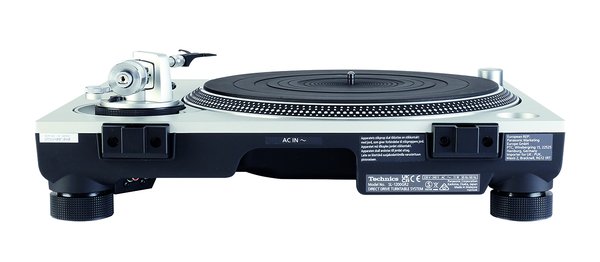
RCA output sockets and a knurled ground connection are fitted under the
rear of the chassis [lower left here]. These are a little fiddly to access, as is the AC
mains inlet also tucked away under the body of the turntable [lower centre]
Delta-Sigma Drive
A notable difference between the more affordable SL-1200 and SL-1500 models and the SL-1200GR2 is its heftier platter and base. The former is a two-piece alloy diecasting with reinforcing ribs built into the underside and a resonance-killing rubber mat placed above. The continuous ferrite ring that forms part of Technics' iron coreless single-rotor/single-stator motor is also attached to the underside of the platter. This coreless direct-drive motor, introduced when the brand was reborn in 2016, avoids the cogging-effect - the stepwise motion - of earlier direct-drives and, indeed, one or two of the OEM drives still being employed by other brands. As far as we know, Matsushita/Panasonic is not selling its 'Technics motor' to anyone else...
The new innovation within this GR2 model is the 'Delta-Sigma Drive' for the motor. Said to be based on Panasonic's JENO Engine (Jitter Elimination and NoiseShaping Optimisation) digital amplification , this replaces the previous PWM controller that stored a reference sine drive pattern in a ROM. The Delta-Sigma Drive, claims Technics, utilises a feedback system that measures the platter's rotation by way of a magnetic frequency generator and then synthesises a corrective digital drive signal that's applied to the motor via a 'very precise' PWM DAC. It's a lot of technology for something that might appear inconsequential, but it seems to make all the difference.
Speed King
Mounting an Ortofon Quintet Bronze MC to the SL-1200GR2's tonearm was simplicity itself and the turntable was ready almost before I was. Like other direct-drive designs, with torque a-plenty, its platter comes up to speed in a second. Maybe this isn't of much importance for every consumer, but it made for an agreeable change to the glacial startup routine of my belt-driven ELAC Miracord 90 Anniversary turntable.
Of course, speed of operation is not the only strong suit of the SL-1200GR2. Music playback benefits from a superbly dynamic and secure sound, and the motor didn't subjectively intrude in any way, allowing fine detail to appear from an agreeably quiet background. Exactly how much detail and clarity will depend on the cartridge, but the rather refined Ortofon MC seemed able to strut its stuff without any restraints.
I’d recently played Racing The Storm [BELLA1424VBU], featuring singer Emilíana Torrini and Antwerp's experimental The Colorist Orchestra, on a Pro-Ject X2 B/Pick it MC9 and not really noticed the many strange sound effects woven into some of the tracks. By contrast, the SL-1200GR2's airy and detailed presentation of this album was an ear-opener, as was its rendering of Torrini's distinctive, almost frailsounding voice. The clarity on offer during 'Right There' uncovered more of her breathy vocal character, so that I was reminded of early Björk (and, yes, Torrini is also Icelandic, albeit with Italian roots).
Showing what's possible when all parts of the vinyl playback chain come together, 'Lonesome Fears' had me wondering what could possibly be missing from the SL1200GR2's performance. Displaying a wide-open, cohesive soundstage, it uncovered myriad little details and let piano notes fade out naturally. Equally, the blasts of metallic percussion heralding the end of the piece had a gratifyingly expansive feel with crisp leading edges.
Over The Moon
It’s hardly surprising that yet another remaster of a landmark album has provoked heated online discussion.That's the case with the 50th anniversary re-issue of Pink Floyd's The Dark Side Of The Moon [PFR 190296203671], remastered by James Guthrie. Some hate it, some love it - and I tend to find myself in the second camp. On Technics' SL-1200GR2, the slightly 'brighter' rendering of these classic tracks was prominent but not grating, the jingling of the cash register in 'Money' or the clocks ringing at the start of 'Time' simply capturing attention, as they should. Moreover, it was the stereo stage - with ample space for precise placement of instruments and effects - that was particularly compelling.
When ‘Money’ shifts up a gear halfway through, the SL-1200GR2 confidently followed suit, finding the bite and vibrato of David Gilmour's guitar playing and punching out the rhythm section. Even though this is a song that I've probably heard hundreds of times before, playing it on Technics' latest turntable was such a coherent, clear and dynamic experience that I was happy to sit and listen all over again (and again).
Emotional Impact
A shift to Audio-Technica's VM-750SH MM didn't airbrush the SL-1200GR2's core qualities. The film scores compiled for LateNightTales: At The Movies [ALNLP62] were rendered with excellent detail, again with that dark background and feeling of space. In particular, the deep chants in Philip Glass's Powaqqatsi had an emotional impact surely true to what he intended, while the deck's pacing and separation shone with the dancing typewriters and samba rhythms of Michael Kamen's 'The Office', from Terry Gilliams' Brazil.
Considering the price tag here, it's hard to find fault with the SL1200GR2. Its low bass might come across as a touch too controlled for some, but this is one of the elements that make this turntable so rhythmically secure. And if you have become accustomed to a more 'rumblesome' deck, Technics' latest shows how it can be done...
Hi-Fi News Verdict
On its face, the SL-1200GR2 feels quite iterative, bringing small improvements to an already very accomplished package - Technics has not been tempted to 'fix' what is not already 'broken'. Yet there's no denying this remains a superb deck, offering rock-solid performance thanks, in part, to that unrivalled direct-drive motor.
At this price the SL-1200GR2 is, without a doubt, one of the very best vinyl spinners on the scene.
Sound Quality: 90%
